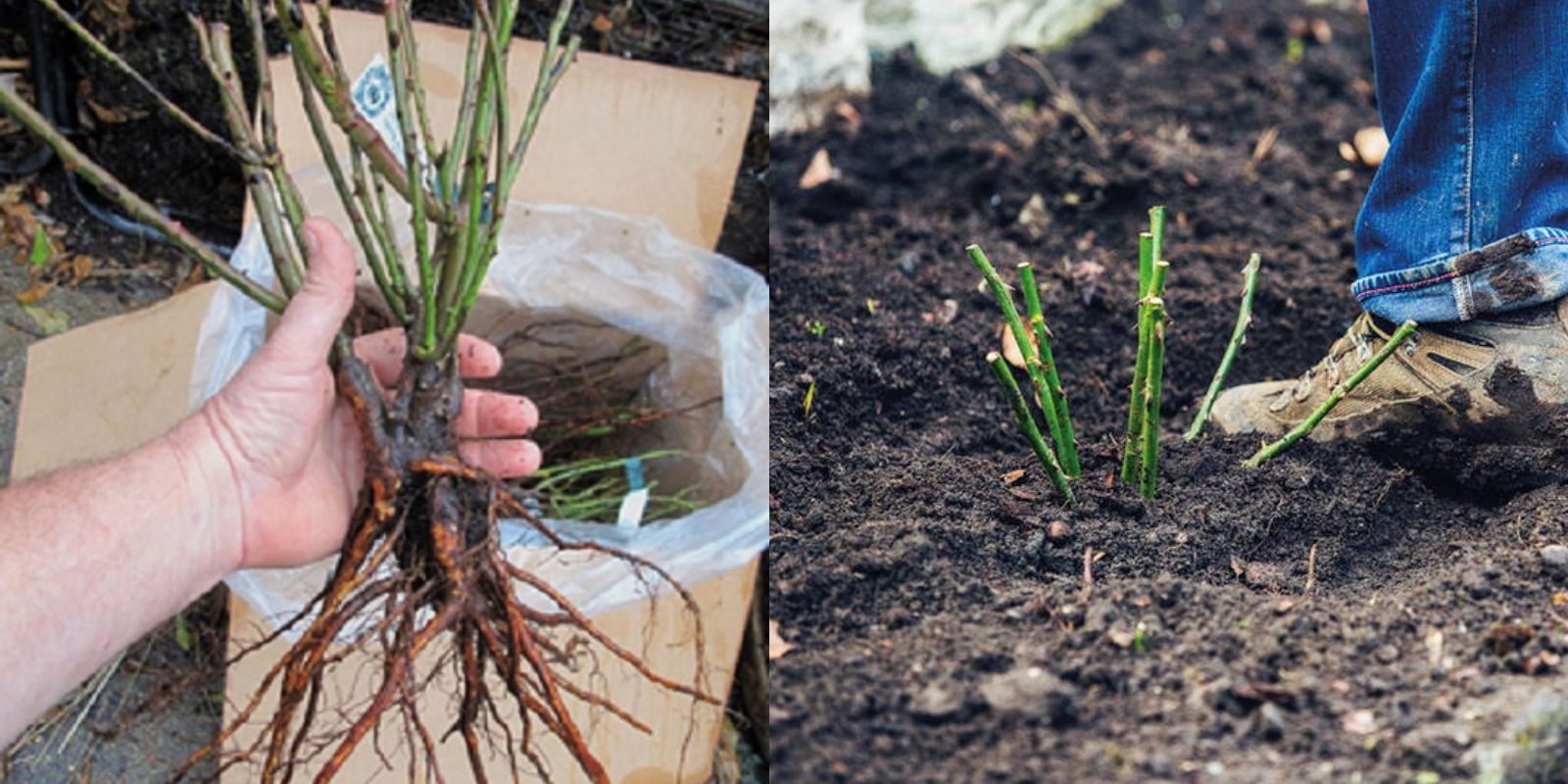Planting bare-rooted roses is a time-honored method for establishing beautiful rose bushes in your garden. These roses, sold without soil around their roots, are an economical and effective choice for many gardeners. With the right preparation and care, you can enjoy a flourishing rose garden that blooms beautifully each year. This comprehensive guide will walk you through the entire process of planting bare-rooted roses, from preparation to aftercare.
Introduction
Bare-root roses offer a wonderful opportunity to enrich your garden with vibrant colors and delightful fragrances. Unlike potted roses, which come with soil around their roots, bare-root roses are shipped dormant and without soil. This makes them lighter and easier to handle, and often more affordable. Planting them correctly ensures that they establish well and grow into robust, blooming plants.
1. Choosing the Right Time
Timing is crucial for successful rose planting. Bare-root roses should be planted during their dormant period to give them the best start. The optimal times are early spring or late fall. In spring, plant after the last frost but before new growth begins. In fall, plant several weeks before the first hard frost to allow roots to establish.
2. Preparing the Soil
Roses thrive in well-draining soil enriched with organic matter. Choose a location that receives at least 6-8 hours of sunlight per day. If your soil is heavy clay or sandy, amend it with compost or well-rotted manure to improve its structure and fertility. Good soil preparation promotes healthy root development and overall plant vigor.
To prepare the soil:
- Test the Soil: Conduct a soil test to determine pH and nutrient levels. Roses prefer slightly acidic soil with a pH between 6.0 and 6.8.
- Amend the Soil: Mix in organic matter like compost, aged manure, or peat moss to improve drainage and add nutrients.
3. Soaking the Roots
Before planting, it’s essential to rehydrate the bare-root rose to ensure it has adequate moisture to begin growth. Soak the roots in water for 6-12 hours. This helps to revive them after their time in storage and prepares them for planting.
To soak:
- Fill a Container: Use a bucket or large container filled with water.
- Submerge the Roots: Place the bare roots in the water, making sure they are fully submerged.
- Allow Soaking: Let the roots soak for the recommended time, then remove and gently shake off excess water.
4. Digging the Hole
The planting hole should be spacious enough to accommodate the rose’s roots without crowding. Ideally, the hole should be twice as wide and as deep as the root ball of the plant. This allows roots to spread out and establish effectively.
To dig the hole:
- Mark the Location: Use a garden spade or shovel to outline the hole.
- Dig Deep: Aim for a hole that is about 12-18 inches deep and wide. Create a small mound of soil in the center of the hole to support the roots.
5. Planting the Rose
Positioning the rose correctly in the hole is crucial for its successful establishment. The graft union, which is the swollen area on the stem where the rose variety was grafted, should be at soil level. Planting too deep or too shallow can affect the rose’s growth and health.
To plant:
- Place the Rose: Position the rose in the center of the hole with the graft union at the soil surface.
- Spread the Roots: Gently spread out the roots over the mound of soil.
- Backfill the Hole: Fill the hole with the excavated soil, tamping it down gently as you go to remove air pockets.
6. Watering and Mulching
After planting, it’s essential to provide adequate water and mulch to support the rose’s establishment and prevent weeds. Watering helps settle the soil and ensures that the roots have good contact with the soil.
To water and mulch:
- Water Thoroughly: Give the plant a deep watering right after planting. Ensure the water reaches the root zone and helps settle the soil.
- Apply Mulch: Spread a layer of mulch, such as wood chips or straw, around the base of the plant. Mulch helps retain moisture, regulate soil temperature, and suppress weed growth.
7. Aftercare and Maintenance
Proper aftercare is essential for the long-term health and productivity of your rose plants. Regular maintenance ensures that your roses grow strong and produce abundant blooms.
To care for your roses:
- Monitor Growth: Keep an eye on the rose’s growth and watch for signs of stress, such as wilting or yellowing leaves.
- Fertilize: Apply a balanced rose fertilizer according to package instructions to support healthy growth and flowering.
- Prune: Remove any dead or damaged wood and shape the rose bush to promote good air circulation and encourage new growth.
Motivation
Embarking on the journey of planting bare-rooted roses is a rewarding experience that can transform your garden into a vibrant oasis. With the right preparation and care, you’ll enjoy a lush, colorful display of roses that will bring joy and beauty to your outdoor space. Start planting today and watch your garden blossom with the timeless elegance of roses! 🌹✨

